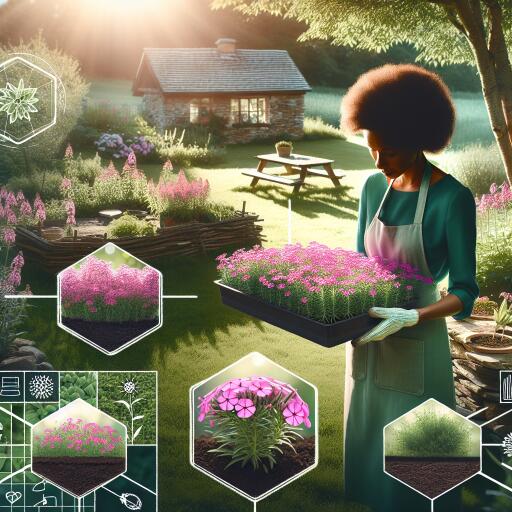
Unlocking the Secrets to Planting Phlox Successfully
Phlox, with its enchanting blooms, can transform any garden into a vibrant tapestry of color. Its adaptability to various conditions makes it a favorite among gardeners. However, the key to embracing its full potential lies in understanding the optimal conditions and locations for planting. In this guide, we’ll delve into how to set the stage for your phlox to thrive, ensuring your garden is a visual feast.
Finding the Perfect Spot
The ideal location for planting phlox is one that basks in the full sun to partial shade, receiving around 6 hours of sunlight a day. This resilience allows it to thrive in well-draining soil, slightly acidic to neutral in pH, enriched with organic matter to fuel its growth.
When envisioning the layout of your garden, imagine phlox as a natural border or as a splendid cascade over stone walls and rock gardens. Its low-growing nature demands spaces where it can spread its vibrant palette without competition from taller plants. The strategic placement along pathways or framing garden beds can amplify its visual impact, allowing its beauty to be admired from afar and up close.
Complementary Gardening
Phlox’s spreading habit makes it perfect for filling in gaps and creating seamless borders within the garden. When planning, consider pairing phlox with contrasting plants to enhance visual appeal. Spacing is crucial; planting your phlox 12-18 inches apart will afford them room to grow into a lush display without overcrowding, ensuring each plant receives adequate sunlight and nutrients.
Weathering the Climate
Though phlox is robust, your climate’s specific conditions will dictate its ideal placement. Shelter from wind and extreme heat will support its longevity. Even shaded areas can burst into color with the right phlox variety, such as Phlox divaricata or Phlox stolonifera, brightening those spaces traditionally challenging to fill with life.
A Habitat for Pollinators
Phlox’s allure isn’t limited to its looks alone; its blooms are a beacon for pollinators like butterflies and bees. Surrounding phlox with other pollinator-friendly varieties not only creates a living tableau but supports the local ecosystem, contributing to the conservation of these vital creatures.
Seasonal Splendor
While renowned for its springtime vibrancy, phlox’s charm doesn’t end there. Certain varieties can also grace your garden with color in summer or autumn. Planning for a succession of blooms ensures your garden remains a focal point of beauty and interest throughout the seasons.
Maintenance and Growth
Ensuring your phlox remains a showstopper involves routine maintenance. They require ample moisture, especially during their first growth season, and benefit from deadheading to encourage reblooming. A mulch layer can retain moisture and combat weeds, while dividing clumps every few years promotes health and prevents disease. A balanced, slow-release fertilizer will support robust growth and abundant blooms.
Conclusion
Phlox, with its myriad of colors and ease of care, holds the promise of transforming gardens. By selecting the right location—taking into account lighting, soil type, and companionship with other plants—you lay the groundwork for success. Your efforts will be rewarded with a garden that not only thrives but serves as a haven for pollinators and a source of year-round beauty. Embrace phlox in your garden plan, and watch your outdoor space come alive with color and life.





Leave a Reply